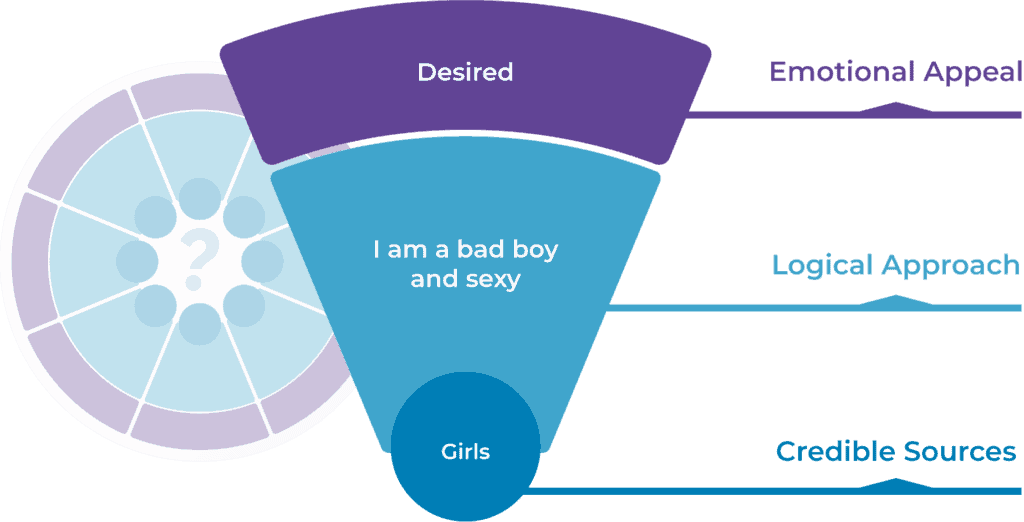Persuasion

Sometimes presenting facts alone will not cut it. Especially in times when people are afraid and anxious facts don’t seem as relevant to people as before. People grasp onto any information that might make them feel comfortable or offer simple explanations or solutions to complicated situations. This is one of the reasons why fake remedies and cures are widely spread, or why people start to hoard toilet paper after watching videos of empty shelves in supermarkets. Whether these articles or images are true or not doesn’t really matter, they look and sound believable and promote strong emotions of fair, panic, and urgency, but also offer safety, comfort and opportunity. People get the feeling that they have to act and that they are able to act. They are not the victims of a crisis anymore.
Debunking these false pieces of information is important, but is not the solution to everything. If you debunk a piece of false information (like a fake remedy) and simply tell people that they are wrong you will probably not make the impression you hoped for. People will probably disregard your factual information because it is not the fix for their anxiety they hoped for. It doesn’t provide a solution to their needs. But if we use credibility, logic and emotion in our fact checking efforts, we might have a chance.
We can make our reporting more impactful by using the following elements:
- Credible Sources: people the audience trusts.
- Logical Approach: presenting new knowledge, skills or attitudes in a way the audience recognises and understands.
- Emotional Appeal: the use of emotion to encourage their new knowledge, skills or attitudes.
Credible Sources
Credible sources are people that your audience trusts. Credible sources are broken down into five categories. They are placed in order of importance:
Category | Description | Emotion | |
1 | People like us | These are family members, friends or peers. Depending on the context of the target audience. This is your community. | High |
2 | Celebrities | Each community has their own celebrities. Celebrities are on a psychological level the aspirational versions of ourselves. | High |
3 | Role Models | People similar to us but who have achieved success. A role model is usually community based. They are accessible, whereas celebrities are more distant. | Medium |
4 | Community leaders | These include policemen, local politicians, religious leaders, etc. They are specific to the community. | Medium |
5 | Experts | Experts rank low in the persuasive list due to their low emotional value. Experts use jargon and have a habit of superiority that the audience disengages with. This is not to say that they aren’t important. | Low |
For example: If you are a millennial gamer you will know the name PewDie- Pie (Felix Kjellberg), a Swedish YouTube celebrity. Starting in 2010 the young gamer would play and review games on his YouTube channel. His 60 Million following rely on him for candid opinion on new games. For the gaming community, PewDiePie started as a ‘person like us’ and is now a ‘celebrity’. But for a skateboarder, PewDiePie is probably not a credible source since he is just a little bit interested in skateboarding. So we’d probably have to look for pro-skateboarders.
During the COVID-19 crisis we see a lot of false information being spread by ‘people like us’ (for example, family members who still believe it’s just a ‘flu’) and ‘celebrities’ (for example Elon Musk who spreads stories of fake remedies on twitter). There is a good reason why people believe their stories more than what an expert tells them in the news: we trust them, they speak our language, and we are emotionally invested in them.

Canvas: Who influences your target audience?
Logical Approach
Logic appeals to the intellect and it is all about presenting factual information. As campaigners, we need facts but we know that facts alone will not persuade. Only a few people will read detailed factual information. Many need more than facts.
A logical approach assumes you start with your audience. It is their logic that you need to start from, not your own. Look at what your audience believes, the language they use and the kind of stories they like. By using their own logic you’ll have a better chance to get your campaign to stick. Official statistics might seem relevant for example, but if your audience thinks for instance that numbers presented by the government cannot be trusted, you should rethink your strategy. It is always possible to repackage your information in different words, frames and formats that fit your audience better.
| Disinformation: The rapid spread of disinformation has shown that sometimes logic and facts alone are not enough – fact checking and debunking can be useful for a small number of receivers of the new information but for the vast majority they need more than facts. Misinformation and Disinformation spread through false or bad facts also indicate the emotional state of your audience, who they are trusting and where they are getting their information from. These can help you build campaigns that reach your audience in a more convincing way. |
Emotional Appeal
To persuade we must activate emotions or feelings. Logic alone does not persuade. Emotion is a tremendous driver that alters our current understanding and is linked to the formation of memory. When you make important choices on a car, a home or a partner, it is usually not a logical decision. In fact, less than 10% of the population makes choices based on information alone. When we understand what the audience’s emotions are, we can examine alternatives that can challenge their thinking. It is important to note that your persuasion involves an emotional shift. We are hardly encouraged to accept new knowledge, skills or attitudes if we are not encouraged to do so. If your audience is afraid for example, you can acknowledge that in your campaign and then offer them some comfort or hope, providing a shift in emotion.
To have more impact in our campaigns we have to combine all three aspects:
- use ‘people like us’ & ‘celebrities’ for factual, responsible & ethical campaigning;
- speak the language of our audiences, understand their logic and use it as a starting point;
- understand the emotion of our audiences and use it as a starting point.
Exercise: Go online and find a campaign that inspired you (this can be a societal, but also a marketing campaign); Why did you like it? What spoke to you? Did you participate and why? How would you analyse their campaign aim? To persuade who? What is the current logic of that group? Who are their influencers? And what emotional appeal is the campaign using?
Campaign Aims
This approach forms the basis for setting your campaign persuasive aim; to persuade your target audience using the combination of starting from the logic and emotions of your audiences, and using their influencers. Once you understand who you are talking to, the aim provides the “what to say”. To create an aim you need your target audience statement.
Your aim statement = target audience statement + credible source + logical approach + emotional appeal

For example: I want to target “Some teenage boys who believe smoking is attractive to girls, who they believe make them bad boys and sexy and therefore feel desired.” Your aim statement should then add the target audience + the logic approach + the emotional appeal.
My aim is to persuade: Some teenage boys who believe smoking is attractive to girls, who they believe make them bad boys and sexy and therefore feel desired… to believe… that smoking makes you unattractive to girls who see them as dirty and weak due to peer pressure and therefore feel shame.

Canvas: What is your campaign aim?
Write down your persuasive aim.
